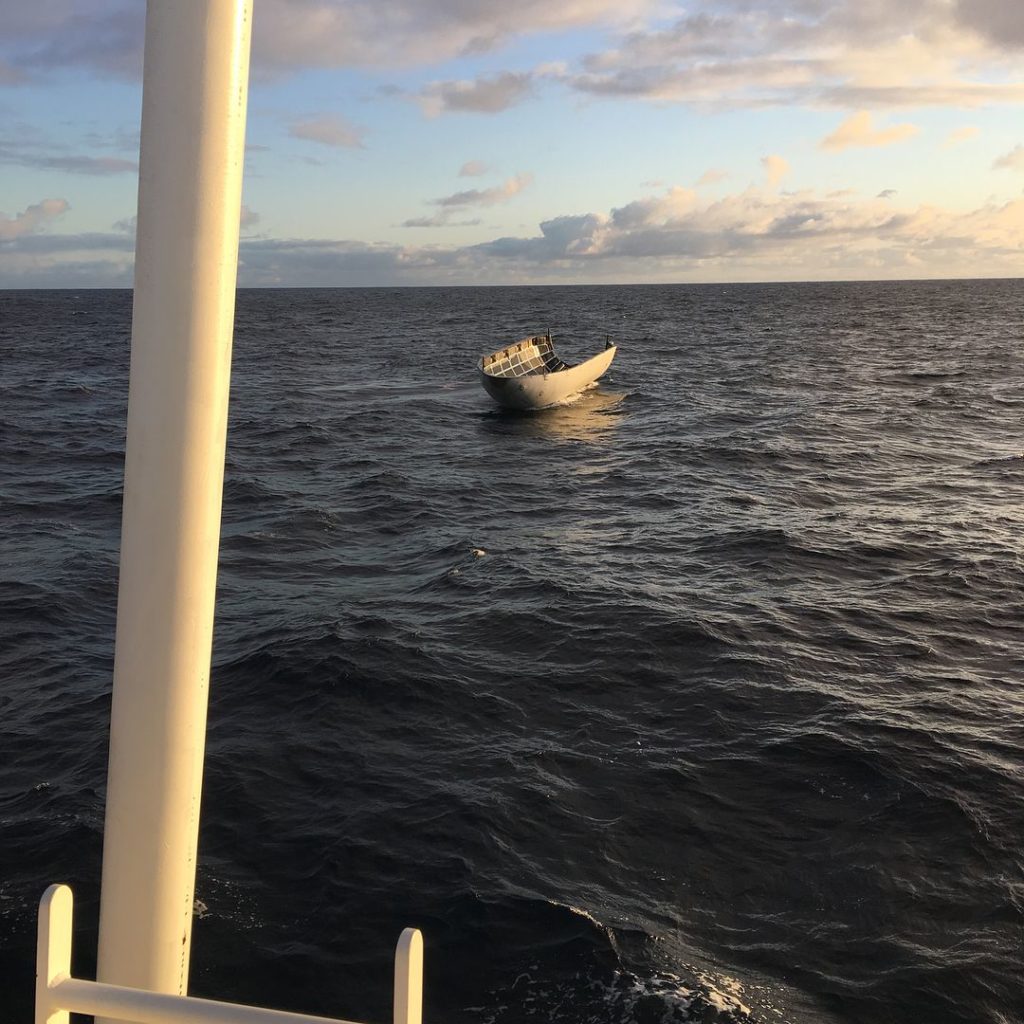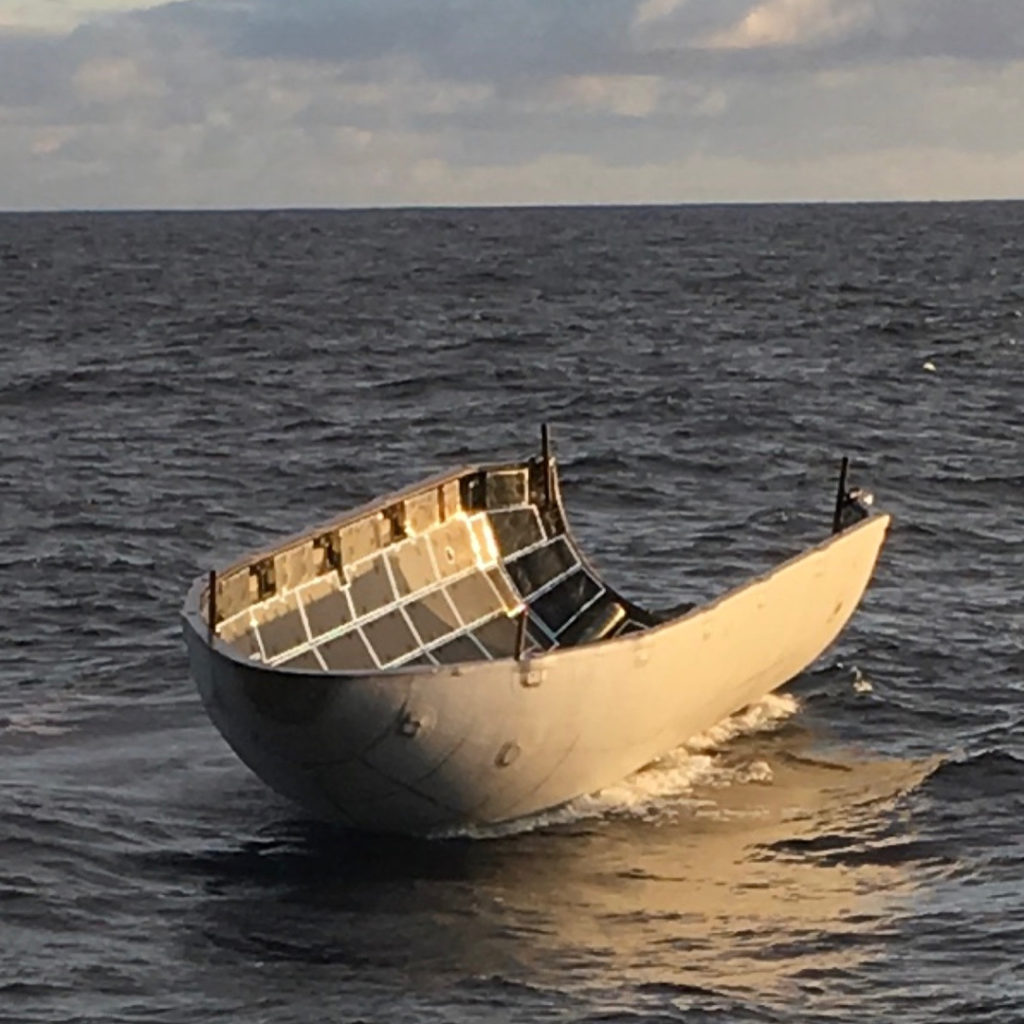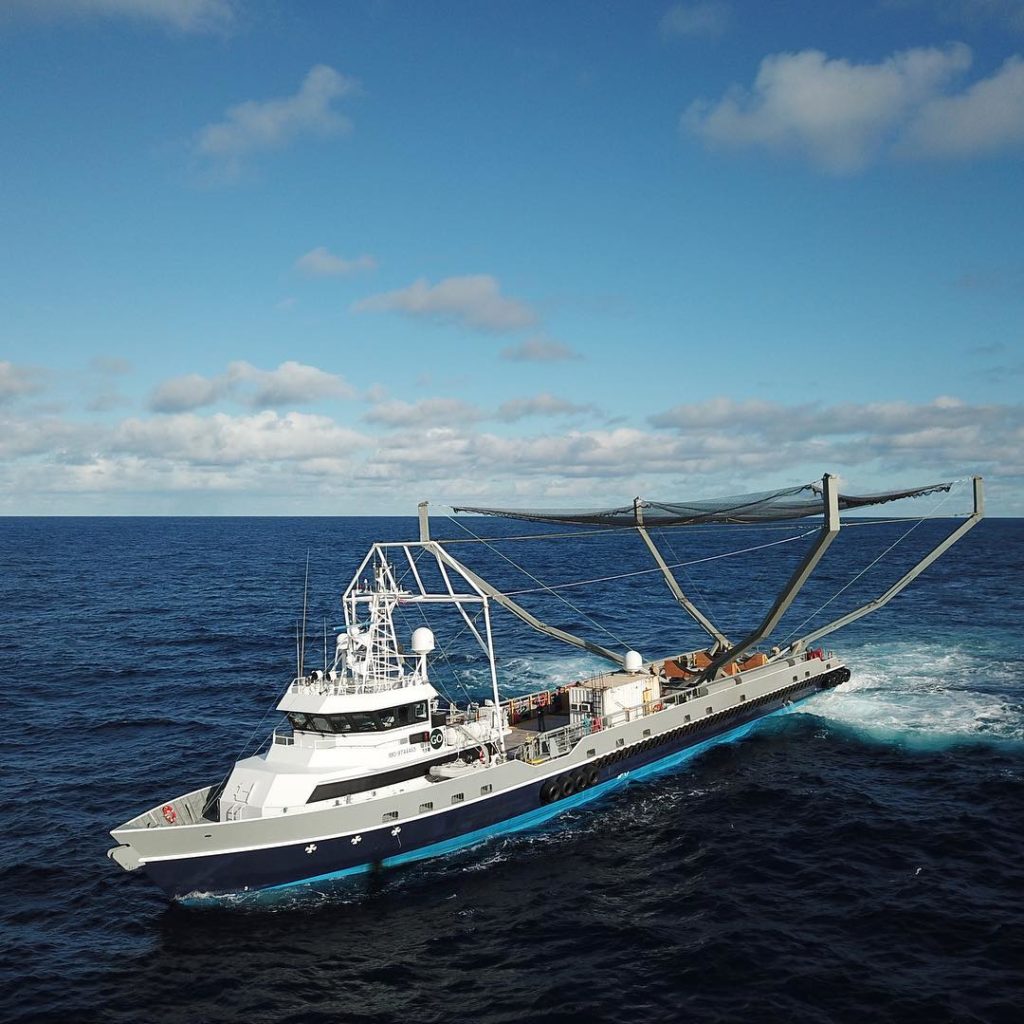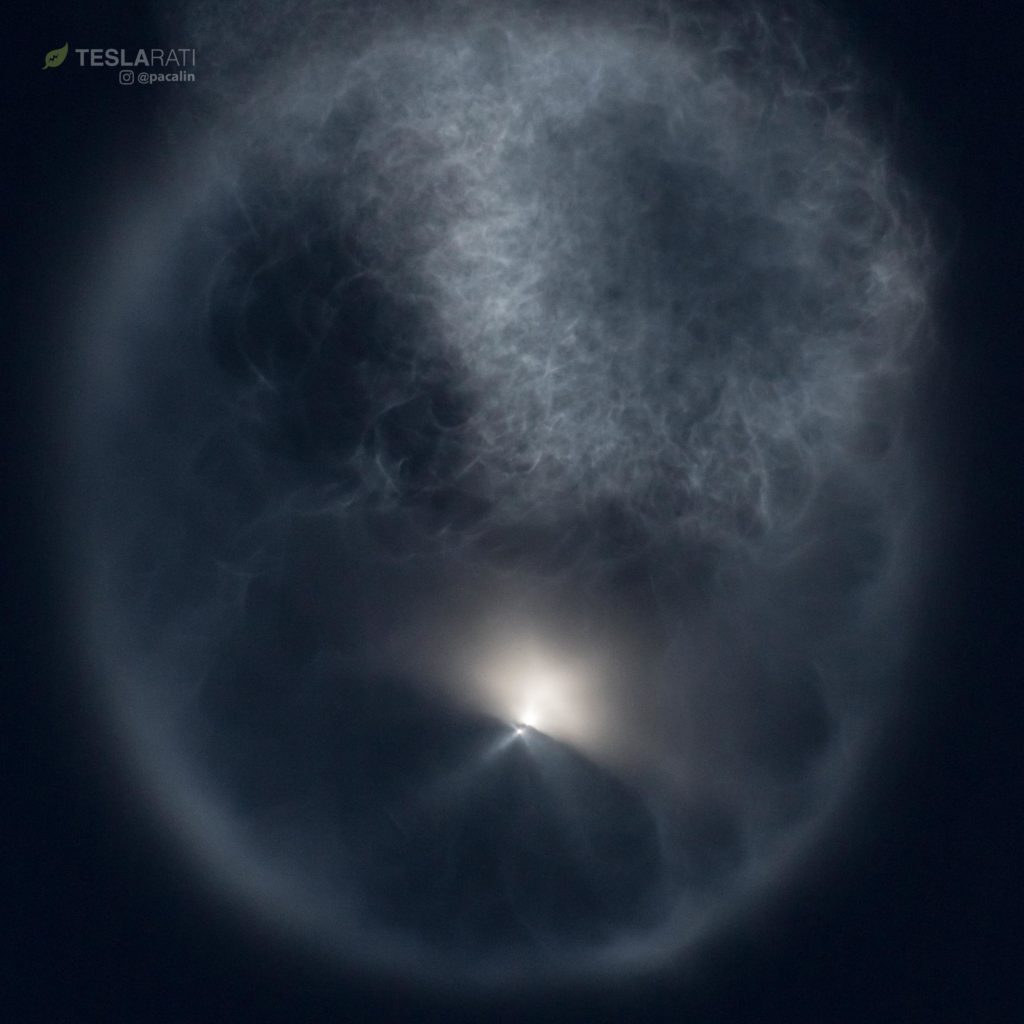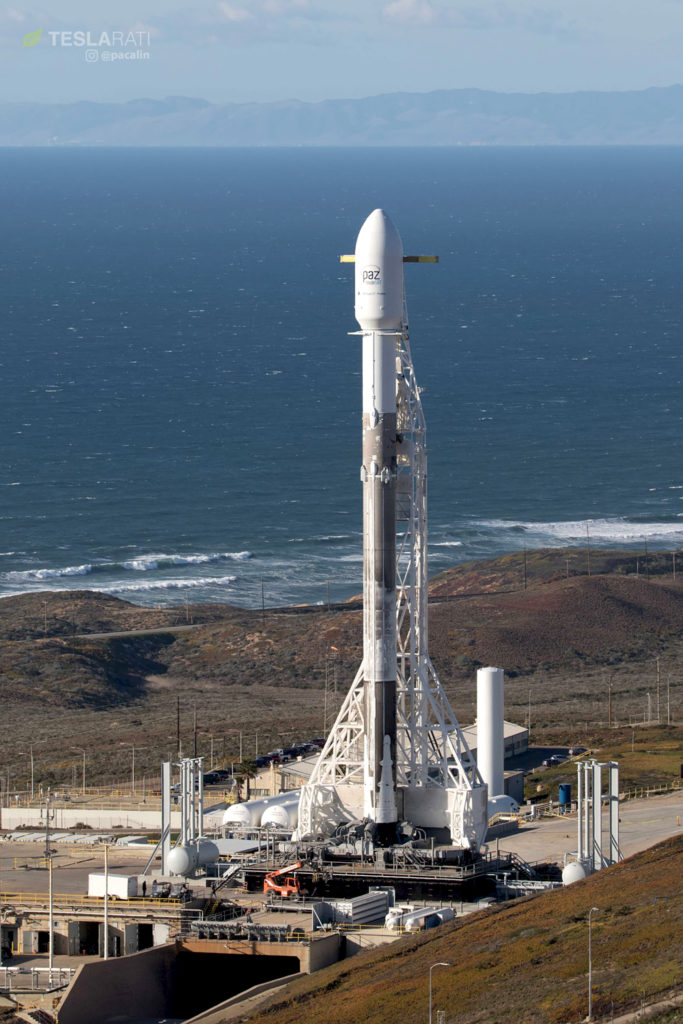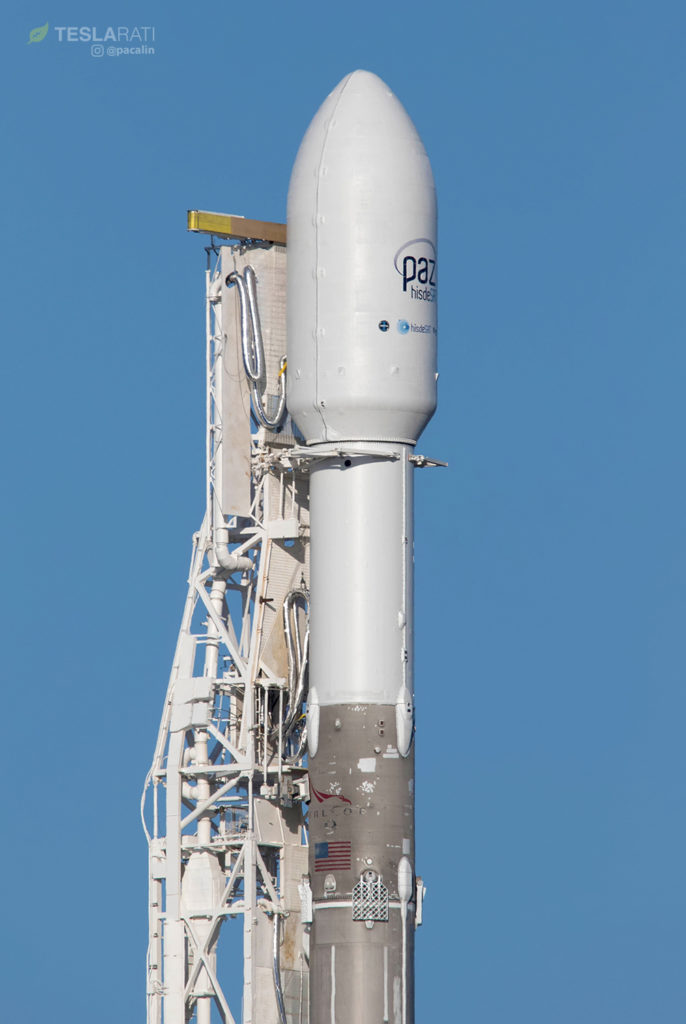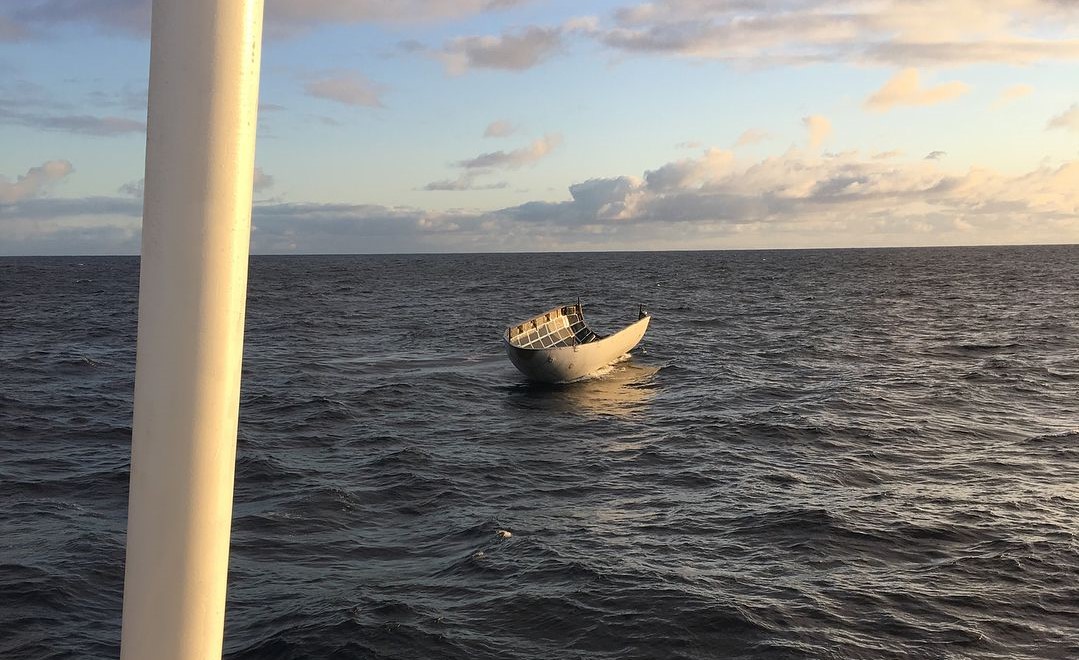
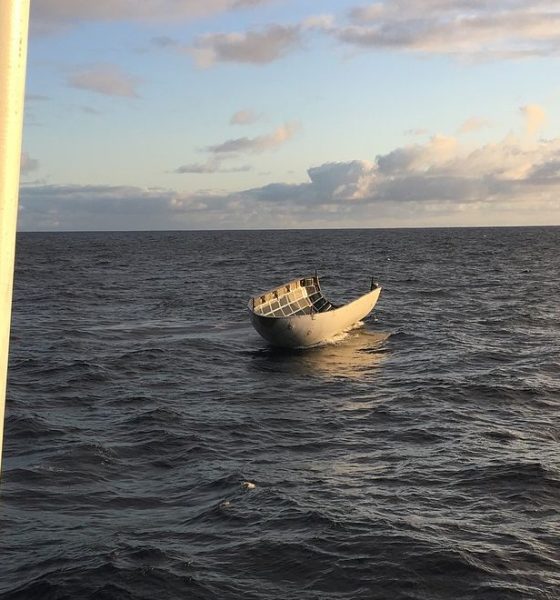
News
SpaceX recovers fairing intact for the first time, Starlink communicating back to Earth
With the launch of PAZ and two of their own Starlink demo satellites, SpaceX has completed its fourth successful launch of 2018, and continued an aggressive series of reusability-focused flight-tests.
Amazingly, the company managed to successfully recover a fairing intact for the first time ever, an absolutely crucial step towards ramping the Falcon family’s launch cadence and reusability. According to CEO Elon Musk, SpaceX’s fairing recovery vessel Mr. Steven missed the fairing by a few hundred meters, meaning that the fairing gently landed in the Pacific Ocean, rather than Mr. Steven’s now-famous fairing recovery net. This is quite possibly the first time in aerospace history that an orbital rocket’s payload fairing has been recovered intact, and the fairing in question looks very much intact.
- It may look unassuming, but that fairing half could swallow an entire school bus and by all means should not be in one piece. (Fairing from PAZ, photo by Elon Musk)
- A closeup of the landed fairing. This particularly fairing is the first flight of Fairing 2.0, a recent upgrade. (Elon Musk)
- Mr Steven is currently undergoing arm surgery (upgrades) at SpaceX’s future BFR factory lot, known as Berth 240. (Elon Musk)
As mentioned by Musk, that massive piece of hardware had to survive reentry into Earth’s atmosphere at no less than Mach 8, considerably more than two times faster than the famous SR-71 Blackbird spy plane. While the fairing’s parafoil appears to have sunk after being quickly detached, careful observers will note three vertical bars at its three corners, almost certainly the points where that parafoil attaches to them and allows it to gently float down to the ocean surface. While not nearly as consequential as SpaceX’s growing expertise with Falcon booster recovery and reuse, each fairing – made largely of carbon fiber composites – takes a huge amount of time and effort to complete, and cost upwards of $3 million each ($6m for both halves). In this sense, SpaceX has managed to recover a pallet of cash, as Musk humorously likened the effort fairing reuse to in 2017.
Given just how good the fairing’s condition appears to be, as well as the calm sea states, it’s very likely that SpaceX will try to pick up the landed fairing with a crane, although that would require a different vessel – Mr. Steven has no crane! Teslarati’s Pauline Acalin will undoubtedly be checking out the Port of San Pedro once Mr. Steven has returned to shore, in hopes of capturing the first-ever photos of a recovered orbital rocket fairing.
Remote camera has been retrieved, wet with morning dew…and WITH images! Awesome launch by SpaceX. @teslarati #SpaceX #Paz #Starlink pic.twitter.com/tDTXxZErN4
— Pauline Acalin (@w00ki33) February 22, 2018

Falcon 9 roars into the dark California sky with PAZ and Starlink. (Pauline Acalin)
- Similar to the Iridium-4 launch that had LA screaming “ALIENS!!!”, this launch gave an incredible show to California. (Pauline Acalin)
- SpaceX intends to launch three Falcon 9s from all three of its pads in just seven days. Pictured here their VAFB pad in California. (Pauline Acalin)
- SpaceX’s first Starlink prototypes launched in late February aboard a flight-proven Falcon 9 booster. (Pauline Acalin)
- Tragically, the pictured bird is not a falcon, but a vulture. (Pauline Acalin)
Starlink hopes tempered despite apparent success
While only mentioned a few times during the webcast, the Falcon 9 that launched earlier today was also carrying additional co-passengers – two SpaceX demonstration satellites, in this case. Confirmed to have successfully deployed and begun communicating with SpaceX ground control, this is another huge accomplishment for SpaceX and marks their first-ever steps into dedicated satellite manufacturing and operation. Despite the significance of this event, SpaceX was keen to lower expectations for the satellite internet network, named Starlink. The following statement was provided during the webcast:
“Even if these satellites work as planned, we still have considerable technical work ahead of us to design and deploy a low Earth orbit satellite constellation. If successful, [this system] would provide people in low to moderate population densities around the world with affordable, high-speed internet access, including many that have never had internet access before.”
https://www.instagram.com/p/BfgTyTzgYVm/
For all intents and purposes, this appears to be a significant departure from previous statements given about Starlink by the rocket company. The explicit mention of “low and moderate” population densities being the only focus of service contrasts heavily with a general sense that Starlink was intended from the outset to provide universal internet around the globe to anyone who could afford the service. This certainly serves as a confirmation that there are major technological hurdles that will need to be overcome for Starlink to become the universal internet many have come to hope for from SpaceX – it would appear that it will be quite difficult to serve high-density populations with SpaceX’s current choice of technologies for their constellation.
Still, the demand is undeniably there. Even readers of Teslarati expressed an immediate desire to ditch their cable companies and ISPs, both in the US and abroad. If SpaceX can make it happen, they will have hordes of eager ISP-hating internet users desperate for any alternatives, and your author is proudly among them. The badly served aside, it sounds like SpaceX may be pivoting towards Starlink as a method of connecting the underserved – mainly those in rural or undeveloped areas. Even in the US, this is a major problem for those that do not live near large cities, and US ISPs are exceptionally anti-consumer in these situations – often times charging obscene costs for cable installation or outright refusing to provide coverage. Starlink could be a boon for those individuals in the US and elsewhere, especially where a simple lack of infrastructure is the cause. Much of Africa suffers from this, although mobile networks have become a backbone for a relatively unique pattern of mobile phone usage.
- .While SpaceX’s own visualizations are gorgeous and thrilling in their own rights, Romax’s interpretation adds an unparalleled level of shock and awe. (SpaceX)
- SpaceX’s first two Starlink prototype satellites are pictured here before their inaugural Feb. 2018 launch, showing off a utilitarian design. (SpaceX)
Here’s to hoping that SpaceX manages to once again rise to an exceptional technological challenge. As with all R&D efforts, the company’s satellite effort would be helped immensely with additional funds, and thankfully Falcon 9 Block 5 is very nearly ready to fly its first missions. This highly reusable iteration of the rocket could enable SpaceX to fly dozens of missions with a single Falcon 9 booster, and would thus enable unprecedented profit margins for a launch company, at least in the interim. Eventually, SpaceX is bound to bring down its prices for the customer, but the first need to recoup their reusability and Falcon Heavy investments, while also ensuring a sound business plan to support the development of their BFR and BFS vehicles that may one day enable the colonization of space. Starlink may be another beneficiary of those profits, and could itself one day act as a source of reliable funding for SpaceX’s interplanetary endeavors.
Teslarati – Instagram – Twitter
Tom Cross – Twitter
Pauline Acalin – Twitter
Eric Ralph – Twitter

Elon Musk
Tesla’s Elon Musk: 10 billion miles needed for safe Unsupervised FSD
As per the CEO, roughly 10 billion miles of training data are required due to reality’s “super long tail of complexity.”

Tesla CEO Elon Musk has provided an updated estimate for the training data needed to achieve truly safe unsupervised Full Self-Driving (FSD).
As per the CEO, roughly 10 billion miles of training data are required due to reality’s “super long tail of complexity.”
10 billion miles of training data
Musk comment came as a reply to Apple and Rivian alum Paul Beisel, who posted an analysis on X about the gap between tech demonstrations and real-world products. In his post, Beisel highlighted Tesla’s data-driven lead in autonomy, and he also argued that it would not be easy for rivals to become a legitimate competitor to FSD quickly.
“The notion that someone can ‘catch up’ to this problem primarily through simulation and limited on-road exposure strikes me as deeply naive. This is not a demo problem. It is a scale, data, and iteration problem— and Tesla is already far, far down that road while others are just getting started,” Beisel wrote.
Musk responded to Beisel’s post, stating that “Roughly 10 billion miles of training data is needed to achieve safe unsupervised self-driving. Reality has a super long tail of complexity.” This is quite interesting considering that in his Master Plan Part Deux, Elon Musk estimated that worldwide regulatory approval for autonomous driving would require around 6 billion miles.
FSD’s total training miles
As 2025 came to a close, Tesla community members observed that FSD was already nearing 7 billion miles driven, with over 2.5 billion miles being from inner city roads. The 7-billion-mile mark was passed just a few days later. This suggests that Tesla is likely the company today with the most training data for its autonomous driving program.
The difficulties of achieving autonomy were referenced by Elon Musk recently, when he commented on Nvidia’s Alpamayo program. As per Musk, “they will find that it’s easy to get to 99% and then super hard to solve the long tail of the distribution.” These sentiments were echoed by Tesla VP for AI software Ashok Elluswamy, who also noted on X that “the long tail is sooo long, that most people can’t grasp it.”
News
Tesla earns top honors at MotorTrend’s SDV Innovator Awards
MotorTrend’s SDV Awards were presented during CES 2026 in Las Vegas.

Tesla emerged as one of the most recognized automakers at MotorTrend’s 2026 Software-Defined Vehicle (SDV) Innovator Awards.
As could be seen in a press release from the publication, two key Tesla employees were honored for their work on AI, autonomy, and vehicle software. MotorTrend’s SDV Awards were presented during CES 2026 in Las Vegas.
Tesla leaders and engineers recognized
The fourth annual SDV Innovator Awards celebrate pioneers and experts who are pushing the automotive industry deeper into software-driven development. Among the most notable honorees for this year was Ashok Elluswamy, Tesla’s Vice President of AI Software, who received a Pioneer Award for his role in advancing artificial intelligence and autonomy across the company’s vehicle lineup.
Tesla also secured recognition in the Expert category, with Lawson Fulton, a staff Autopilot machine learning engineer, honored for his contributions to Tesla’s driver-assistance and autonomous systems.
Tesla’s software-first strategy
While automakers like General Motors, Ford, and Rivian also received recognition, Tesla’s multiple awards stood out given the company’s outsized role in popularizing software-defined vehicles over the past decade. From frequent OTA updates to its data-driven approach to autonomy, Tesla has consistently treated vehicles as evolving software platforms rather than static products.
This has made Tesla’s vehicles very unique in their respective sectors, as they are arguably the only cars that objectively get better over time. This is especially true for vehicles that are loaded with the company’s Full Self-Driving system, which are getting progressively more intelligent and autonomous over time. The majority of Tesla’s updates to its vehicles are free as well, which is very much appreciated by customers worldwide.
Elon Musk
Judge clears path for Elon Musk’s OpenAI lawsuit to go before a jury
The decision maintains Musk’s claims that OpenAI’s shift toward a for-profit structure violated early assurances made to him as a co-founder.

A U.S. judge has ruled that Elon Musk’s lawsuit accusing OpenAI of abandoning its founding nonprofit mission can proceed to a jury trial.
The decision maintains Musk’s claims that OpenAI’s shift toward a for-profit structure violated early assurances made to him as a co-founder. These claims are directly opposed by OpenAI.
Judge says disputed facts warrant a trial
At a hearing in Oakland, U.S. District Judge Yvonne Gonzalez Rogers stated that there was “plenty of evidence” suggesting that OpenAI leaders had promised that the organization’s original nonprofit structure would be maintained. She ruled that those disputed facts should be evaluated by a jury at a trial in March rather than decided by the court at this stage, as noted in a Reuters report.
Musk helped co-found OpenAI in 2015 but left the organization in 2018. In his lawsuit, he argued that he contributed roughly $38 million, or about 60% of OpenAI’s early funding, based on assurances that the company would remain a nonprofit dedicated to the public benefit. He is seeking unspecified monetary damages tied to what he describes as “ill-gotten gains.”
OpenAI, however, has repeatedly rejected Musk’s allegations. The company has stated that Musk’s claims were baseless and part of a pattern of harassment.
Rivalries and Microsoft ties
The case unfolds against the backdrop of intensifying competition in generative artificial intelligence. Musk now runs xAI, whose Grok chatbot competes directly with OpenAI’s flagship ChatGPT. OpenAI has argued that Musk is a frustrated commercial rival who is simply attempting to slow down a market leader.
The lawsuit also names Microsoft as a defendant, citing its multibillion-dollar partnerships with OpenAI. Microsoft has urged the court to dismiss the claims against it, arguing there is no evidence it aided or abetted any alleged misconduct. Lawyers for OpenAI have also pushed for the case to be thrown out, claiming that Musk failed to show sufficient factual basis for claims such as fraud and breach of contract.
Judge Gonzalez Rogers, however, declined to end the case at this stage, noting that a jury would also need to consider whether Musk filed the lawsuit within the applicable statute of limitations. Still, the dispute between Elon Musk and OpenAI is now headed for a high-profile jury trial in the coming months.
